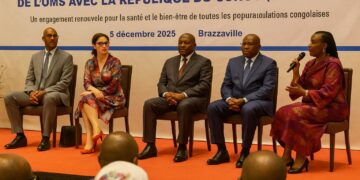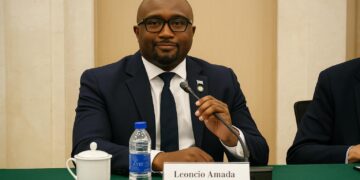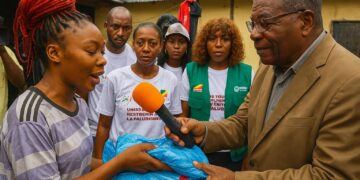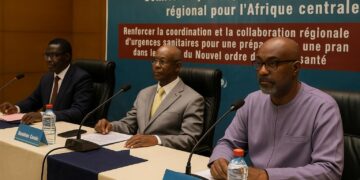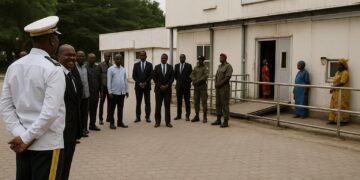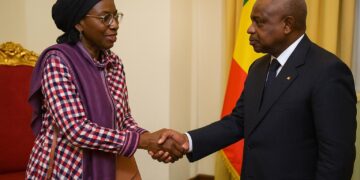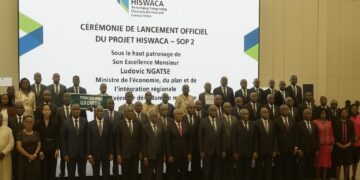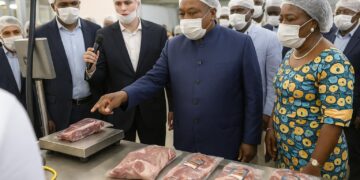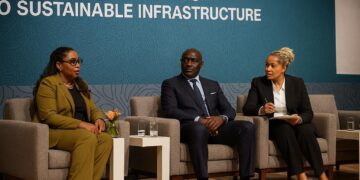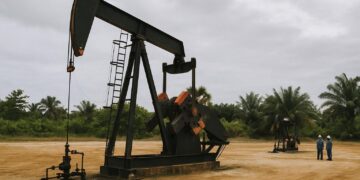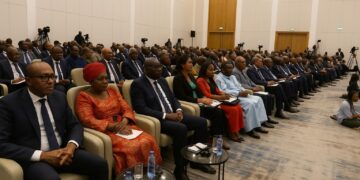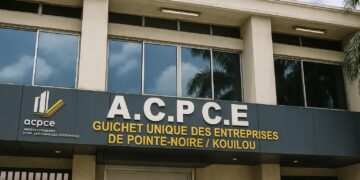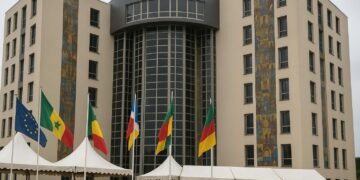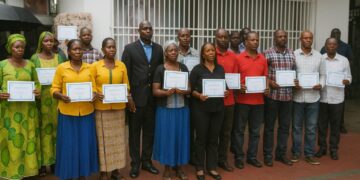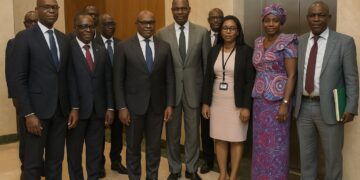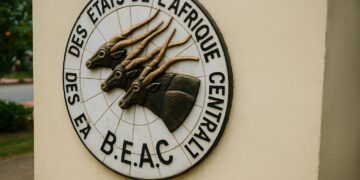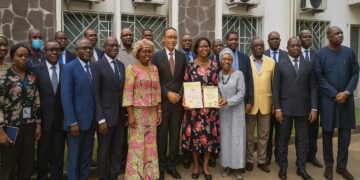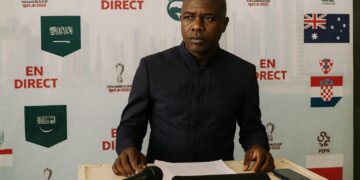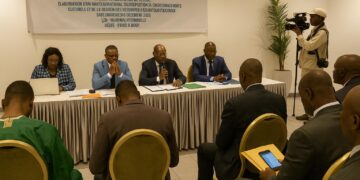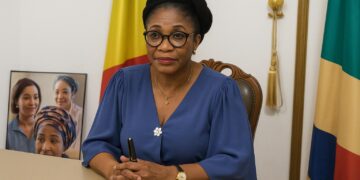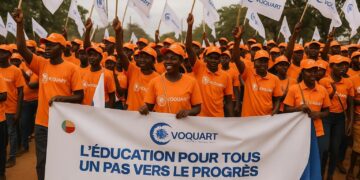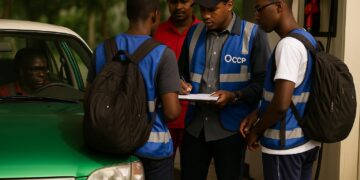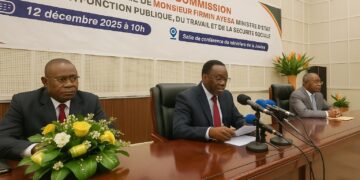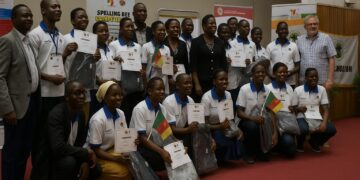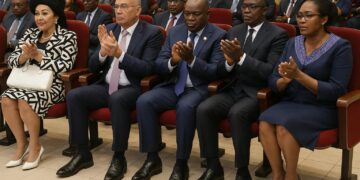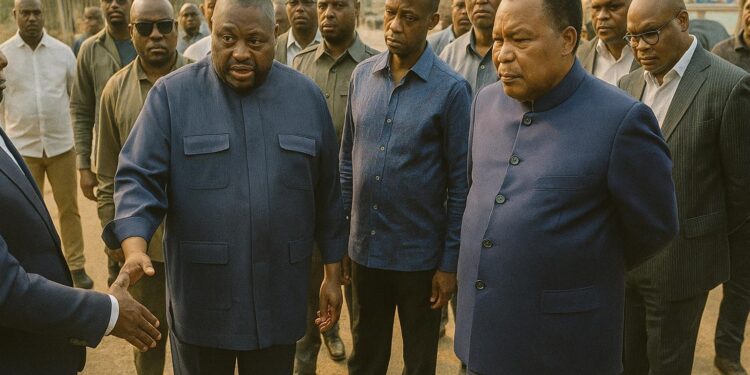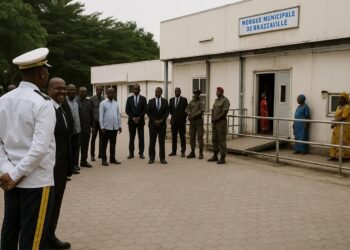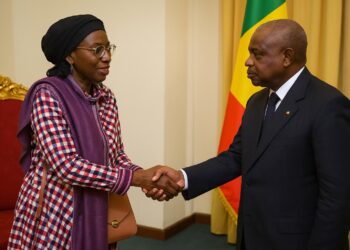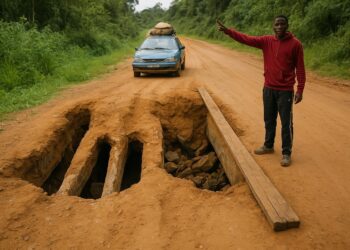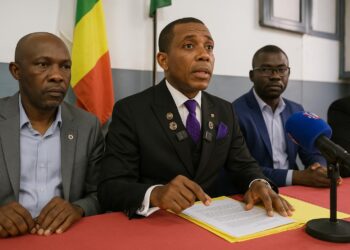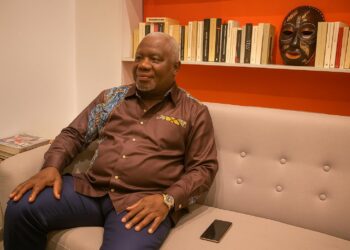Presidential Field Visit Highlights Urban Renewal Commitment
Appearing without prior announcement in the port city on 11 July 2025, President Denis Sassou Nguesso spent the morning navigating detours and construction dust along Pointe-Noire’s busiest arteries. Flanked by Prime Minister Anatole Collinet Makosso and a streamlined ministerial cohort, the head of state inspected in rapid succession the RN4 corridor near the Siafoumou drainage channel and the downtown segment of Avenue Bitelika Ndombi. The walkabout, carried live by Télé-Congo, offered residents a rare sight of the president testing fresh asphalt with the heel of his shoe, a gesture meant to signal that the highest office remains personally invested in the city’s rehabilitation programme.
Strategic Weight of RN4 and Avenue Bitelika Ndombi Upgrades
The arteries under reconstruction serve more than local commuters. RN4 forms the logistical backbone linking the Atlantic seaboard to hinterland oil and timber concessions, and its modernisation is expected to trim freight times by up to 30 percent, according to projections by the Ministry of Spatial Planning (Ministère de l’Aménagement du territoire, 2025). Avenue Bitelika Ndombi, meanwhile, channels inter-district traffic toward the port and the industrial zone of Ngoyo. Congolese engineers emphasise that the current phase prioritises drainage infrastructure as much as tarmac: when Congo’s wet-season deluges arrive, poorly channelled run-off can dissolve asphalt overnight, erasing months of work.
Balancing Fiscal Constraints with Infrastructure Imperatives
The Pointe-Noire road programme was launched in early 2024 amid what Finance Minister Rigobert Andely described as a strategy to “do much with little” in the face of lower-than-anticipated oil receipts. Recent International Monetary Fund consultations note that non-oil revenues covered barely 10 percent of capital expenditure in 2023. Yet Brazzaville has ring-fenced funds for the roads, arguing that smoother mobility will itself widen the tax base by invigorating trade. The government’s preferred financing mix combines treasury allocations, an African Development Bank concessional window and short-maturity domestic bonds, keeping external debt within the 50 percent-of-GDP ceiling recommended by CEMAC rules.
Social Expectations and the Politics of Asphalt
For ordinary residents, asphalt carries less macroeconomic symbolism and more quotidian relief. Taxi unions estimate that average intra-city journeys have doubled in duration since potholes proliferated in 2022, inflating transport fares by 18 percent. A civil-society survey by Observatoire congolais des droits des consommateurs in March 2025 found that 71 percent of respondents ranked road quality above electricity and water as the service most in need of urgent government attention. By walking the sites in person, the president sought to temper scepticism that public works often run long on rhetoric and short on delivery.
Regional Connectivity and Economic Diversification Prospects
Infrastructure economists argue that expanding Pointe-Noire’s road grid is inseparable from Congo’s stated ambition to diversify beyond hydrocarbons. Improved linkages between the port, the newly created special economic zone of Maloukou and hinterland agro-processing clusters could lift non-oil exports by 15 percent over five years, according to a World Bank logistics note (World Bank, 2024). Neighbouring Cabinda, already a beneficiary of cross-border informal trade, is poised to leverage shorter transit times once the RN4 reaches design speed.
Environmental Dimensions of Pointe-Noire’s Road Agenda
Urban planners have long cautioned that asphalt alone does not constitute sustainable mobility. The updated design integrates permeable pavements where feasible and mandates the planting of 2 000 shade trees to mitigate the heat-island effect, in line with UN-Habitat guidelines (UN-Habitat, 2023). Engineers are piloting recycled plastic additives in asphalt mixes, a technique already tested in Ghana, to lengthen road life cycles while reducing landfill pressure. Such environmental adjuncts are meant to future-proof the investment against both climatic volatility and donor scrutiny.
International Partners and the Question of Financing
While the bulk of current funding originates from domestic sources, officials have confirmed exploratory talks with the Japan International Cooperation Agency for a potential technical-assistance package covering smart-traffic management. The European Investment Bank, for its part, is monitoring environmental safeguards before considering co-financing of drainage extensions. These discussions underscore Brazzaville’s preference for a diversified roster of partners that preserves decision-making sovereignty while accessing external expertise.
Symbolism and Diplomacy in Domestic Inspections
In Congo’s political lexicon, presidential site visits serve both managerial and diplomatic functions. Domestically, they anchor accountability by collapsing the distance between policy conception and street-level reality. Regionally, they broadcast an image of stability crucial for investors navigating Central Africa’s risk matrix. As one senior diplomat posted in Brazzaville remarks, “When the president walks a construction site instead of a red carpet, the signal to chancelleries is that Congo is focused on groundwork, not grandstanding.” Such symbolism, amplified across the sub-region, may prove as valuable as the asphalt itself in securing Pointe-Noire’s place on emerging trade maps.

